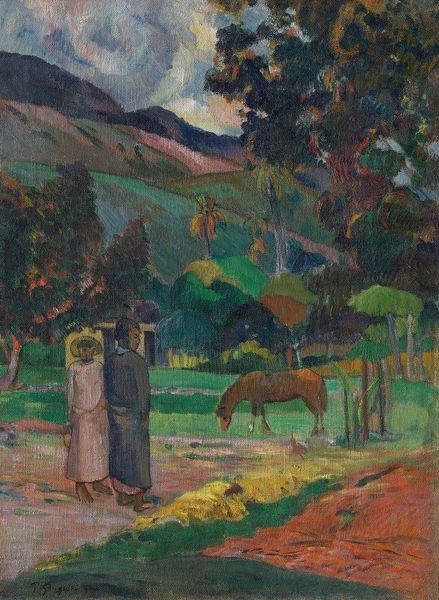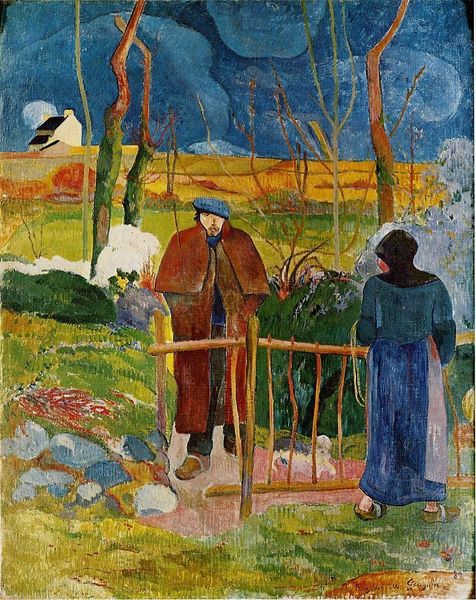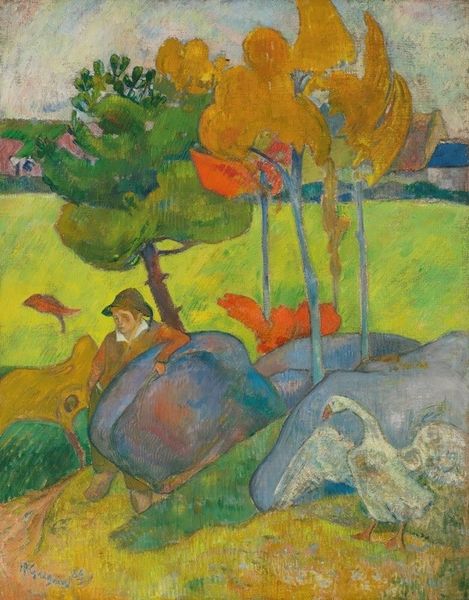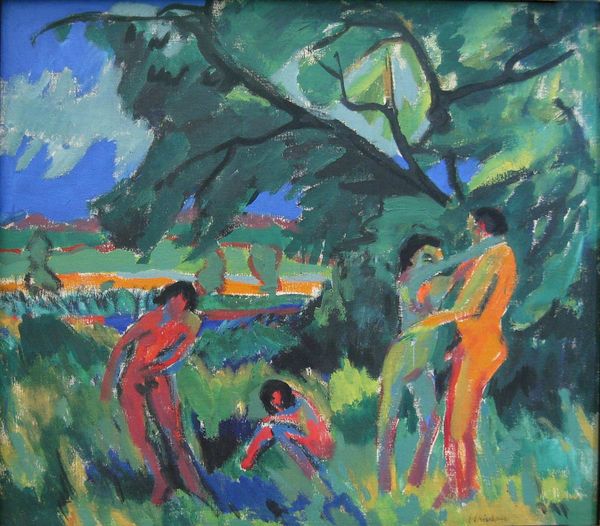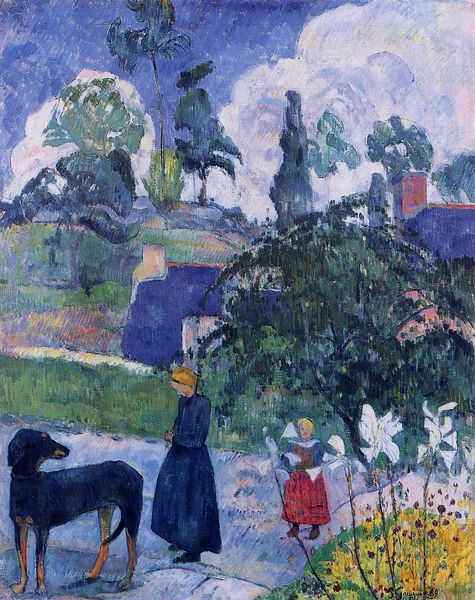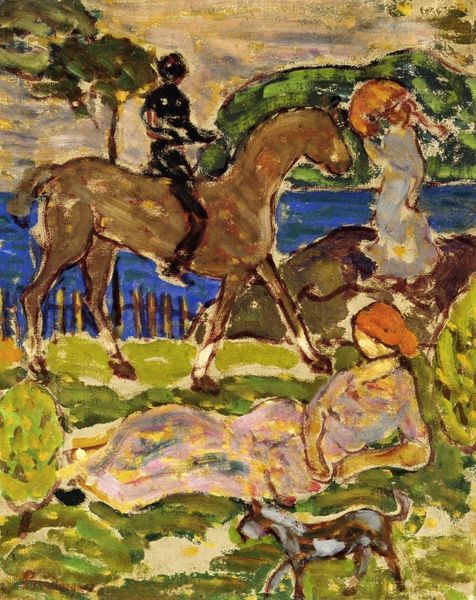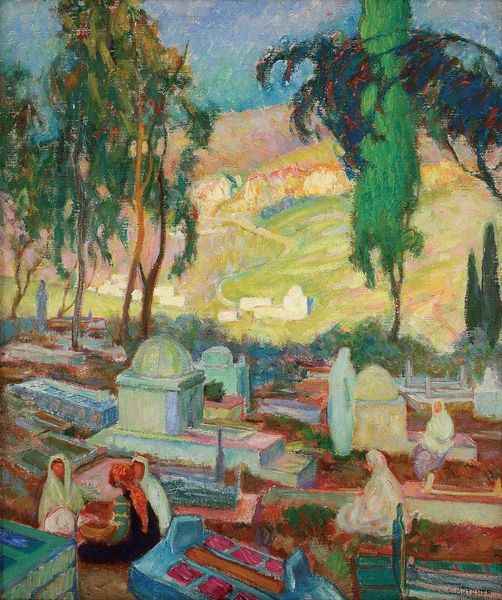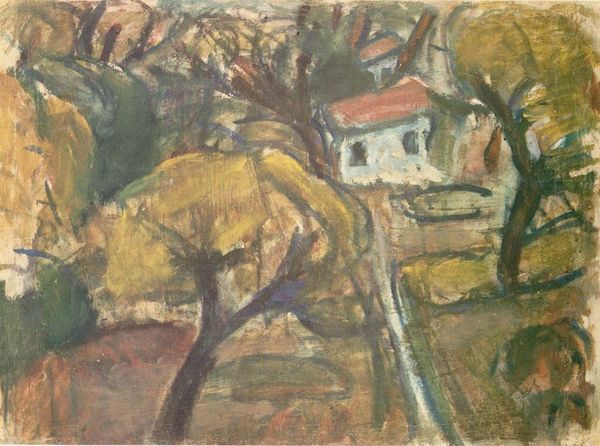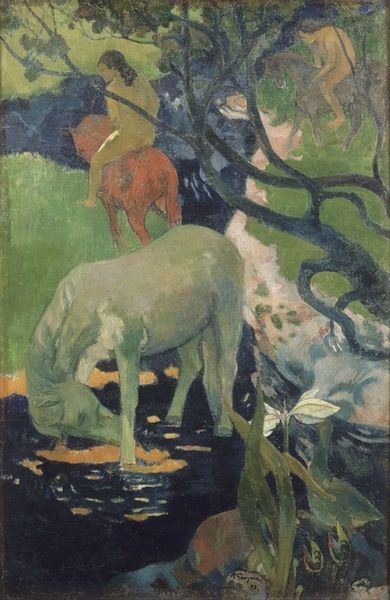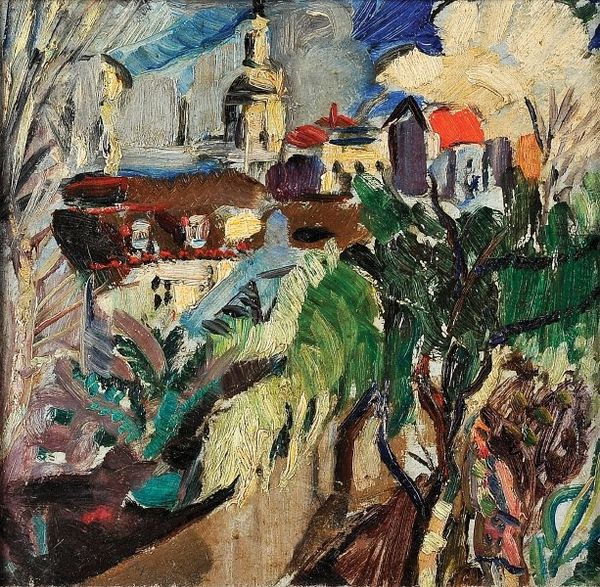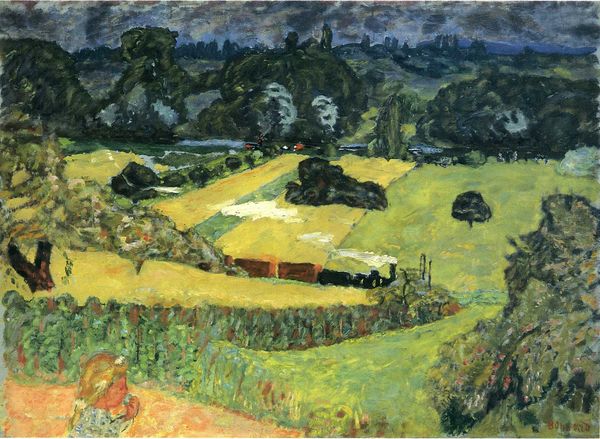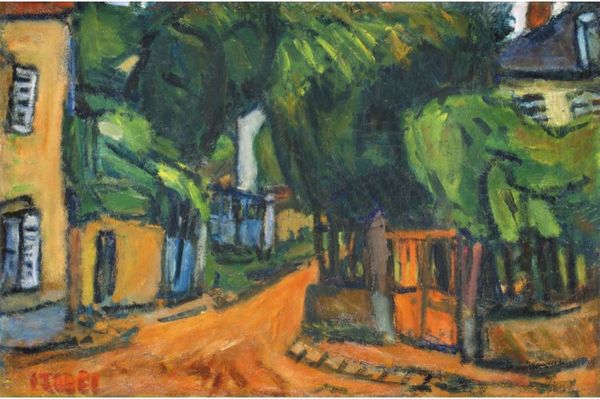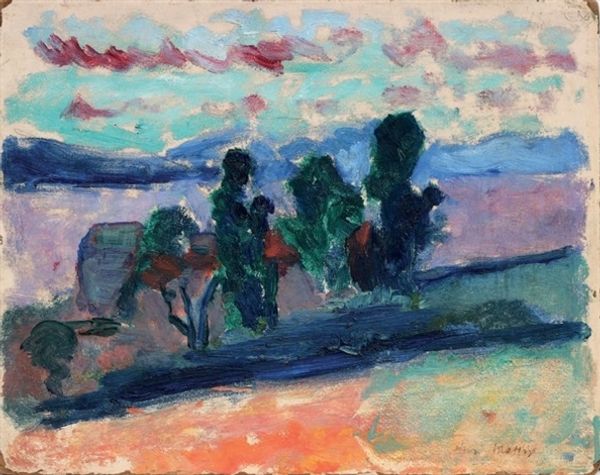
painting, oil-paint
#
figurative
#
painting
#
oil-paint
#
landscape
#
figuration
#
oil painting
#
naive art
#
genre-painting
#
post-impressionism
Copyright: Public Domain: Artvee
Paul Gauguin made this oil on canvas painting, The Red Cow, sometime in the late 1880s, when he was living in Pont-Aven, Brittany. This was a time of great social change in France. As industrialization spread, artists like Gauguin turned away from the city, seeking simpler ways of life. Here, we see a scene of rural labor: a woman carrying a jug, field workers, and of course, the titular red cow. Cows and milkmaids were a common trope in academic art, signifying the bounty of nature and the dignity of labor. However, Gauguin radically simplified the forms and heightened the colors, breaking with academic tradition. What does it mean that Gauguin, an educated, urban man, turned to the countryside for inspiration? Was he romanticizing peasant life? Or was he searching for a new visual language to express the changing social landscape of France? To understand Gauguin's motivations, we might turn to his letters and essays, as well as studies of the art market in late 19th-century France. Such research can help us understand the complex relationship between art, society, and the artist's own ambitions.
Comments
No comments
Be the first to comment and join the conversation on the ultimate creative platform.
